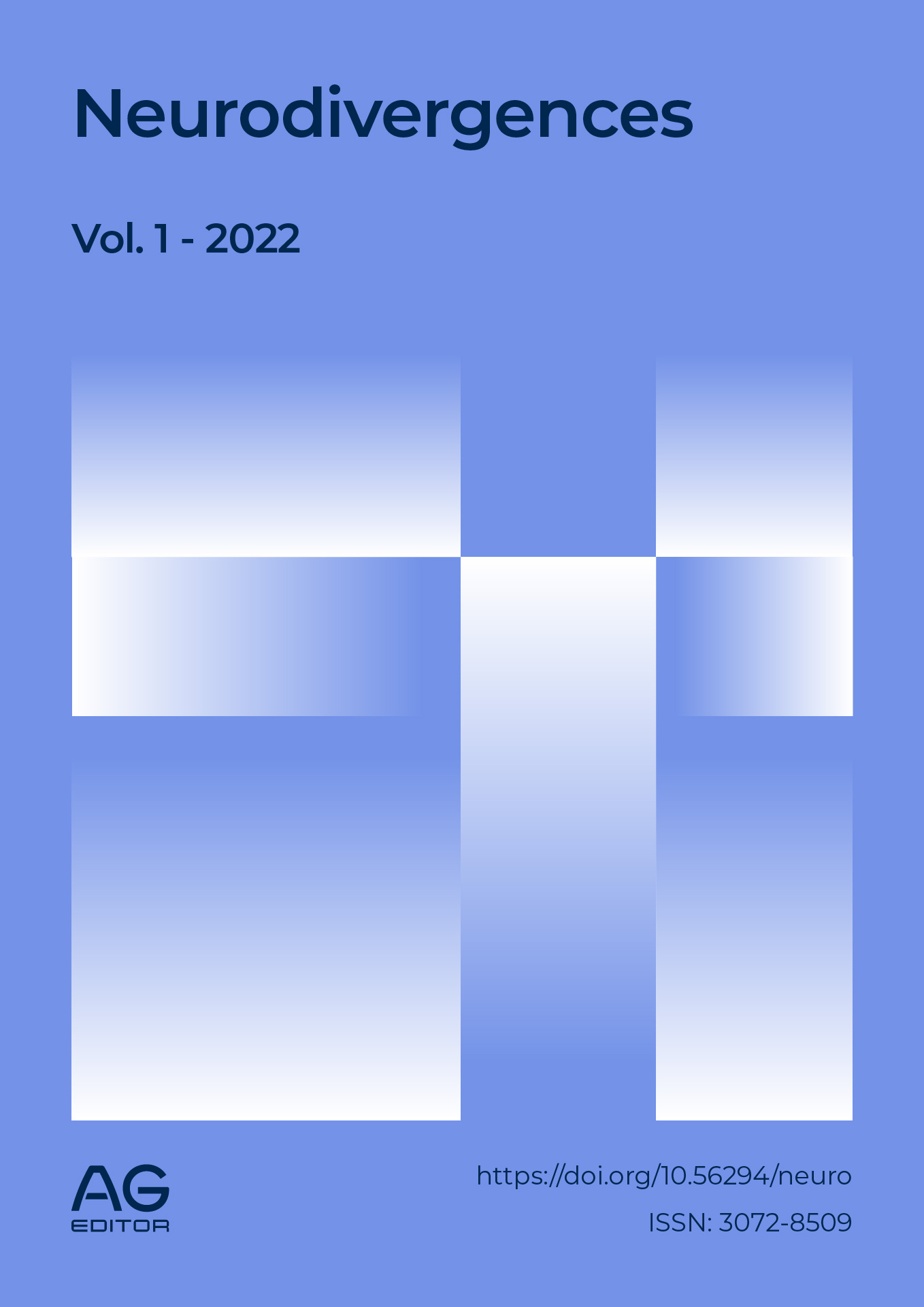Perception and feelings of children with ASD in relation to clothing
DOI:
https://doi.org/10.56294/neuro202236Keywords:
Autism spectrum disorder, sensory perceptual, sensory sensitivity, inclusive clothingAbstract
The purpose of this research is knowing how children from 6 to 13 years with Autism Spectrum Disorder (ASD) perceive and react to certain stimuli in relation to clothing. ASD is a neurodevelopmental disorder characterized by restricted and repetitive behaviors, as well as deficiencies in communication and social interaction. In recent years, the sensory disorder has taken on importance as one of the main factors in ASD, thus recognized by DSM-V in 2013 as part of the diagnosis. The study had an exploratory scope with a qualitative approach, analyzing two perspectives: on the one hand, the one of parents of children with ASD in the province of Córdoba and, on the other hand, the one of health professionals. Therefore, it was analyzed how different clothing factors, such as color, texture, sound, odors, among others, affect to the senses and in which way they are perceived. The results showed that sensory disorder varies from child to child, since it is a spectrum that ranges from hypersensitivity to hyposensitivity. In addition, it was found that a stimulus can cause three states to the child: fascination, rejection or indifference.
References
1. Aguinaga Hinojosa AP. Diseño de un refugio de relajación que apoye a la integración sensorial de la vista, el oído y el tacto, en niños con Trastorno del Espectro Autista (TEA) de edades entre los 7 y 11 años. Caso de estudio Asociación de Padres y Amigos del Autismo (APADA) [tesis de grado]. Quito: Pontificia Universidad Católica del Ecuador, Facultad de Arquitectura Diseño y Artes; 2019 [citado 2025 ago 26]. Disponible en: http://repositorio.puce.edu.ec/handle/22000/16165
2. Ayres J, Tickle LS. Hyper-responsivity to touch and vestibular stimuli as a predictor of positive response to sensory integration procedures by Autistic children. Am J Occup Ther. 1980;34(6):375-81. Disponible en: https://doi.org/10.5014/ajot.34.6.375
3. Bogdashina O. Sensory perceptual issues in Autism and Asperger syndrome. London: Jessica Kingsley Publishers; 2003.
4. Caminha RC. Autismo: Um transtorno de natureza sensorial? [posgrado]. Rio de Janeiro: Pontifícia Universidade Católica do Rio de Janeiro; 2008. Disponible en: https://doi.org/10.17771/PUCRio.acad.13203
5. Contini LE, Astorino F, Manni DC. Estimación de la prevalencia temprana de Trastornos del Espectro Autista. Santa Fe (AR): Boletín técnico, serie zoológica. 2017;13(12-13).
6. Correa ME. Reflexiones acerca del diseño social y su contribución en términos de inclusión. Rev inclusiones. 2015;2(3):182-99. Disponible en: https://ri.conicet.gov.ar/handle/11336/113033
7. Coto Choto M. Autismo infantil: El estado de la cuestión. Rev Cienc Soc Univ Costa Rica. 2007;2(116):169-80. Disponible en: https://www.redalyc.org/articulo.oa?id=15311612
8. Coulter RA. Understanding the visual symptoms of individuals with Autism Spectrum Disorder (ASD). Optom Vis Dev. 2009;40(3):164-75. Disponible en: https://www.chirppi.org/wp-content/uploads/2017/03/visual_symp.pdf
9. Davidoff L. Introducción a la psicología. México: McGraw-Hill Interamericana; 1998.
10. De Souza Godinho S. Diseño inteligente: La inclusión social por medio de la vestimenta. Rev Argent Sociol. 2019;15(25):91-115. Disponible en: http://ras.cps.org.ar/?p=327
11. Duvall JC. Bear hug: The design and development of an active deep touch pressure garment for sensory processing disorder [tesis doctoral]. Minnesota: University of Minnesota; 2017. Disponible en: https://www.proquest.com/openview/e859e751252c4555792e84d6d6fd4fb2/1?pq-origsite=gscholar&cbl=18750
12. Ferreira de Souza R, de Paula Nunes DR. Transtornos do processamento sensorial no autismo: algumas considerações. Rev Educ Esp. 2019;32. Disponible en: http://dx.doi.org/10.5902/1984686X30374
13. Grandgeorge M, Masataka N. Atypical color preference in children with Autism Spectrum Disorder. Front Psychol. 2016;7:1976. Disponible en: https://doi.org/10.3389/fpsyg.2016.01976
14. Instituto Nacional de Estadística y Censos (INDEC). Estudio nacional sobre el perfil de las personas con discapacidad: resultados definitivos 2018. Ciudad Autónoma de Buenos Aires: INDEC; 2018.
15. Jofre Romeo EI. Autismo y visión de color: diseño experimental de un instrumento para detectar deficiencias de visión color en niños del espectro autista no verbal [tesis de grado]. Santiago de Chile: Universidad de Chile; 2016 [citado 2025 ago 26]. Disponible en: http://repositorio.uchile.cl/bitstream/handle/2250/143528/autismo-y-vision-de-color.pdf?sequence=1&isAllowed=n
16. Martín González A. Manual práctico de psicoterapia Gestalt. Bilbao: Desclée De Brouwer; 2011.
17. Morris CG, Maisto AA. Introducción a la psicología. México: Pearson Education Inc.; 2005.
18. Saltzman A. El cuerpo diseñado: sobre la forma en el proyecto de la vestimenta. Buenos Aires: Paidós; 2004.
19. Shin SJH, Smith B, Gaines K. Investigation of therapy clothing products for children with Autism Spectrum Disorders. In: International Textile and Apparel Association (ITAA) Annual Conference Proceedings; 2015. Disponible en: https://lib.dr.iastate.edu/itaa_proceedings/2015/presentations/93/
20. Sicile-Kira C. Autism Spectrum Disorder: the complete guide to understanding Autism. New York: The Penguin Group; 2014.
21. American Psychiatric Association. What is Autism Spectrum Disorder? Washington, DC: APA; 2018 [citado 2025 ago 26]. Disponible en: https://www.psychiatry.org/patients-families/autism/what-is-autism-spectrum-disorder
22. Visciglio GB. Diseño estimulador: el autismo y los niños [tesis de grado]. Buenos Aires: Universidad de Palermo; 2013. Disponible en: https://fido.palermo.edu/servicios_dyc/catalogo_de_proyectos/detalle_proyecto.php?id_proyecto=2585
23. Wing L. El autismo en niños y adultos: una guía para la familia. Barcelona: Paidós Ibérica S.A.; 1998.
24. World Health Organization. Meeting report: Autism Spectrum Disorders and other developmental disorders: from raising awareness to building capacity. Geneva: WHO; 2013. Disponible en: https://apps.who.int/iris/handle/10665/103312
25. Wright J. The real reasons Autism rates are up in the U.S. Sci Am. 2017;316(3). Disponible en: https://www.scientificamerican.com/article/the-real-reasons-autism-rates-are-up-in-the-u-s/.
Published
Issue
Section
License
Copyright (c) 2022 Ileana González , Ana Cubeiro (Author)

This work is licensed under a Creative Commons Attribution 4.0 International License.
The article is distributed under the Creative Commons Attribution 4.0 License. Unless otherwise stated, associated published material is distributed under the same licence.






